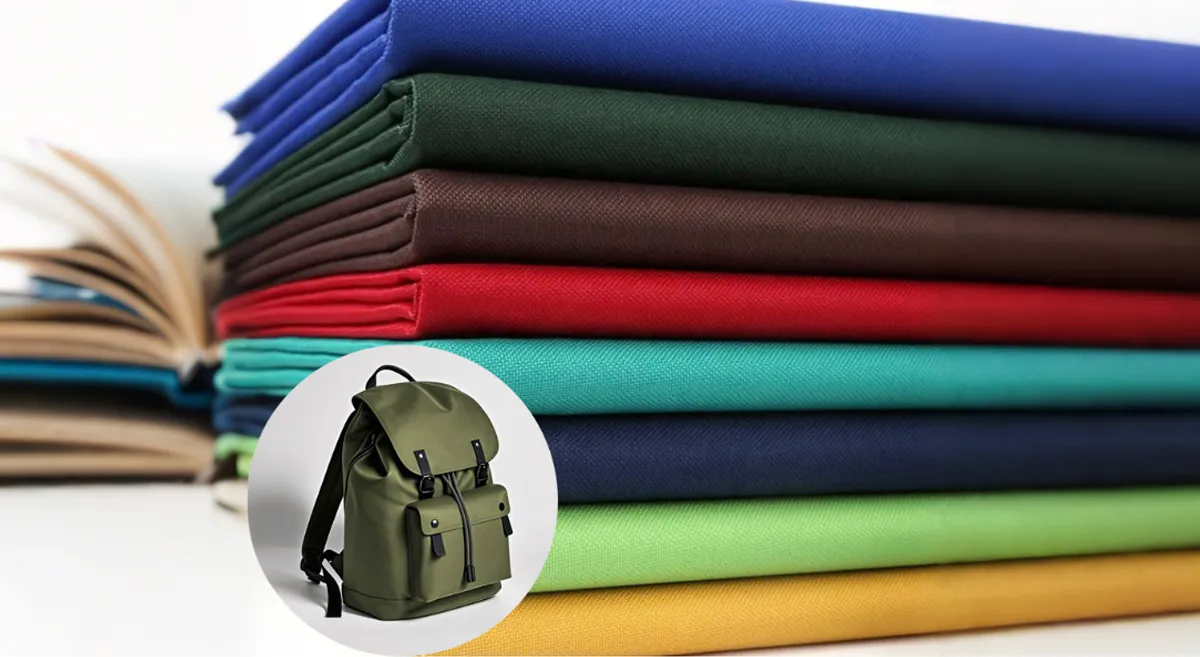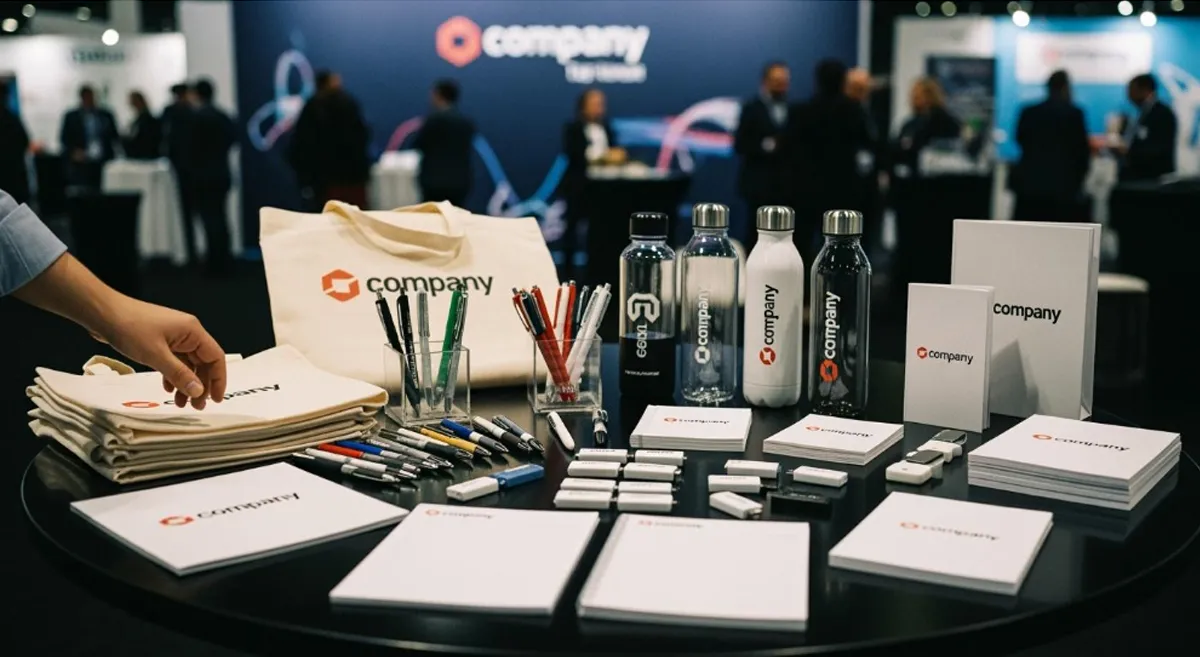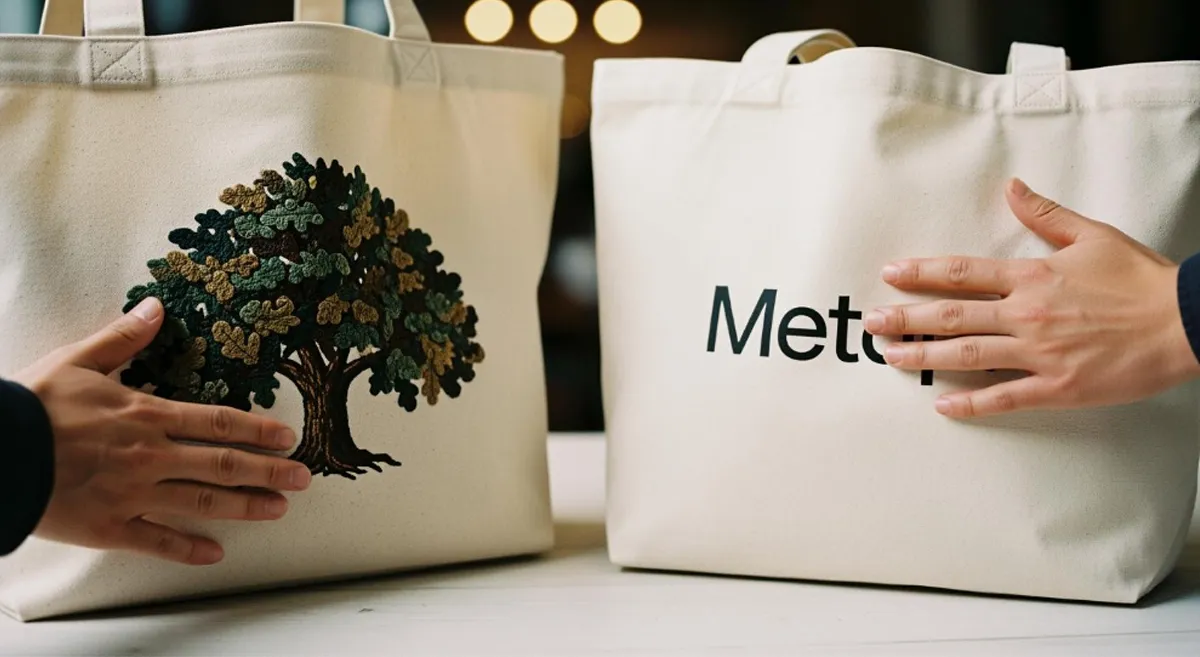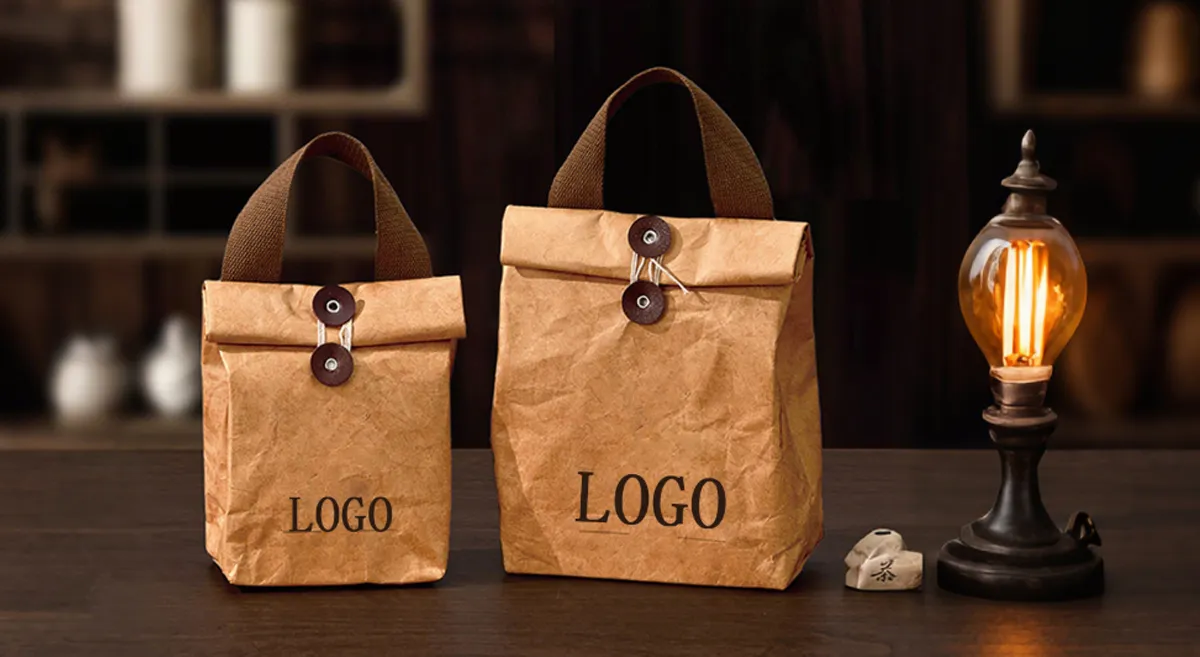You may ask how to choose the best material for your next bag. The thickness of the bag changes how strong and sturdy it is. It also changes how comfortable the bag feels. If you want a good bag, polyester fabric thickness is important. Look at how different thickness levels work:
| Thickness Level | Description | Durability Impact |
|---|---|---|
| 190T | Very thin, pocket-sized bags | Low durability |
| 210D | Shopping bags | Moderate durability |
| 420D-600D | Backpacks, travel bags | High durability |

Light bags are good for quick shopping trips. Heavy-duty bags can carry more weight for a longer time. Polyester bags can last as long as strong cotton bags if you pick the right thickness for what you need.
Key Takeaways
- Pick the right thickness for your polyester bag so it works well for you. Thicker bags are tougher and last a long time.
- Learn about GSM and denier. A higher GSM means the fabric is heavier. A higher denier means the threads are thicker. Both of these make the bag stronger.
- Light bags, like 190T, are good for short trips. Heavy-duty bags, like 600D, are better for heavy things.
- Think about how you will use your bag. Choose the fabric thickness that fits your plans, like shopping, school, or travel.
- Ask for fabric samples before you buy. This lets you touch the material and see if you like it.
- Talk to manufacturers for help. They can give you advice about the right thickness for your needs.
- Don’t make mistakes by picking the wrong thickness. Thin fabric can rip if you put in too much weight.
- Thicker fabric can make the bag heavier. If you want a light bag, pick a thinner one that is still strong.
Understanding Polyester Fabric Thickness
When you pick a polyester bag, you see numbers like GSM, denier, or ounces per square yard. These numbers tell you how thick and strong the fabric is. Let’s break down what each measurement means and why it matters for your bag.
GSM, Denier, and Ounces Explained
What is GSM?
GSM stands for grams per square meter. This number shows you the fabric weight. If you see a higher GSM, you know the fabric is thicker and heavier. A bag with high GSM feels sturdy and lasts longer. You use GSM to compare how dense and tough different bags are. GSM helps you figure out the cost and best use for each type of bag.
Tip: If you want a bag for heavy groceries or books, look for a higher GSM. It means the bag can handle more weight and wear.
What is Denier?
Denier measures the thickness of the fibers in the fabric. It tells you how strong and tough the threads are. A higher denier means thicker fibers and a stronger bag. For example, a 600D polyester bag uses thicker threads than a 190T bag. Denier also affects how the bag feels in your hand. If you want a soft, light bag, choose a lower denier. If you want a tough, rugged bag, go for a higher denier.
Here’s a quick table to help you understand GSM and denier:
| Measurement Unit | Description | Calculation |
|---|---|---|
| Denier | Measures fiber thickness; higher means stronger fabric | 1 denier = 1 g / 9,000 m |
| GSM | Shows fabric weight per square meter; higher means thicker fabric | GSM = weight in grams / area in square meters |
Ounces per Square Yard
Some bags use ounces per square yard to show fabric weight. This is an imperial measurement. It helps you know how heavy the fabric is. If you see a higher number, the bag is thicker and stronger. Ounces per square yard is common in the US and helps you compare bags made with different materials.
Why Fabric Thickness Matters
You want your bag to last. You want it to feel good in your hand. Fabric thickness changes how your bag performs every day. Here’s why you should pay attention to these numbers:
- GSM and denier help you pick a bag that matches your needs. If you need a bag for light shopping, you can choose a lower GSM and denier. If you need a backpack for school or travel, you should pick a higher GSM and denier.
- Fabric weight affects durability. A heavier fabric means your bag can handle more weight and resist tearing.
- Ounces per square yard give you another way to check if the bag is strong enough for your use.
Let’s look at how these measurements affect bag performance:
| Property | Description |
|---|---|
| Denier | Higher denier means stronger fibers and tougher bags. |
| GSM | Higher GSM means heavier, thicker fabric. |
| Fabric Strength | High denier and GSM make bags more durable and long-lasting. |
| Critical Factors | The weave and coatings also change how strong the bag is. |
You see that fabric thickness is not just a number. It decides how much weight your bag can carry and how long it will last. If you pick a bag with low GSM or denier, it may tear or wear out faster. If you choose a bag with high GSM and denier, you get more strength and durability.
Note: Understanding GSM, denier, and ounces per square yard helps you pick the right polyester fabric thickness for your bag. You make sure your bag meets your needs and lasts longer.
You now know how fabric thickness, fabric weight, and gsm and denier work together. When you shop for bags, check these numbers. You will find the best bag for your needs.
Bag Thickness and Durability
Strength and Longevity
When you look for a bag that lasts, you need to think about bag thickness. Thicker polyester fabric gives you higher abrasion resistance, which means your bag can handle rough surfaces and daily use. You want a bag that does not tear easily. Tear strength is a key consideration for durability. If you choose a bag with thicker material, you get better tear strength and abrasion resistance. This makes your bag more durable for heavy loads and frequent trips.
You also get better uv resistance with thicker polyester. Sunlight can damage thin fabrics, but thicker bags stand up to the sun longer. If you use your bag outdoors, uv resistance helps it keep its color and strength. Thicker polyester fabric thickness also means your bag will not shrink or lose its shape. You want your bag to look good and work well for a long time.
Here are some key considerations for durability:
- Thicker polyester fabric increases abrasion resistance and tear strength.
- Bags with higher abrasion resistance last longer and look new.
- Thicker bags offer better uv resistance for outdoor use.
- Dimensional stability keeps your bag in shape over time.
Structure and Feel
The way your bag feels in your hand matters. Thicker polyester fabric gives you a more solid and luxurious touch. You notice the difference right away. Thin bags feel light and soft, but they may not feel sturdy. If you want a bag that feels strong, go for thicker material.
You also get better structure with more bag thickness. Your bag stands upright and holds its shape. You do not have to worry about it sagging or looking floppy. Thicker polyester keeps your bag looking sharp and professional.
- Thicker polyester fabric improves tactile feel and makes your bag feel substantial.
- Bags with more structure look better and work better for carrying heavy items.
- You get higher abrasion resistance, so your bag stays smooth and neat.
Tip: If you want a bag for school or travel, choose thicker polyester for a durable and comfortable feel.
Portability Factors
You might wonder if thicker bags are harder to carry. Thicker polyester fabric adds weight, so your bag may feel heavier. If you want a bag that folds into your pocket, pick a thin and soft material. Thin polyester, rPET, and nylon are great for foldable bags. They compress easily and fit in small spaces.
Thicker bags, like those made from 420D or 600D polyester, are not as easy to fold. They give you higher abrasion resistance and tear strength, but you trade some portability. You need to decide what matters most for your needs.
- Thin polyester bags are light and easy to fold.
- Thicker bags are more durable but less portable.
- Canvas and stiff Tyvek do not fold well, so they are not good for pocket-sized bags.
- Higher D-numbers mean thicker material, which increases durability but also weight.
Note: Think about where you will use your bag. If you need something compact, go for thin polyester. If you want strength and durability, choose thicker fabric.
Common Polyester Fabric Thickness Levels
When you shop for polyester bags, you see numbers like 190T, 210D, and 600D. These numbers tell you how thick and strong the fabric is. Each level has its own best uses. Let’s break down what each thickness means for you.
Lightweight (e.g., 190T, 60-100 GSM)
Lightweight polyester feels soft and folds up small. You find this fabric in bags that need to be portable and easy to carry. 190T polyester and fabrics with 60-100 GSM are common here. These bags weigh very little, so you can toss them in your pocket or purse.
| Fabric Thickness | Typical Applications |
|---|---|
| 190T | Foldable shopping bags, event giveaways, emergency totes |
Best Uses for Lightweight Bags
- Emergency shopping bags
- Event handouts
- Quick grocery runs
You want a bag that folds up tiny? Lightweight polyester is great for bags you use once in a while. These bags do not hold heavy items, but they work well for light loads. You can also find 12oz canvas in some lightweight bags, but it is less common than polyester at this level.
Medium (e.g., 210D, 100-150 GSM)
Medium thickness gives you a nice balance. 210D polyester and 100-150 GSM fabrics feel stronger but still stay light. These bags last longer than lightweight ones and can handle daily use. You see them in tote bags, branded gifts, and even some laptop bags.
| Fabric Thickness | Typical Applications |
|---|---|
| 210D | Everyday tote bags, branded gifts, rainwear, lightweight backpacks |
Best Uses for Medium Bags
- Daily tote bags
- Branded promotional bags
- Lightweight backpacks
- Laptop bags
Medium polyester is great for bags you use every day. You get more strength without much extra weight. Some bags use 12oz canvas at this level, which adds a bit more structure and durability.
Heavy-Duty (e.g., 600D, 150-250+ GSM)
Heavy-duty polyester stands out for its strength. 600D polyester and fabrics with 150-250+ GSM are tough and last a long time. You find these in travel bags, backpacks, and heavy-duty tote bags. The tight weave gives higher tenacity, so your bag can handle rough use.
| Fabric Thickness | Typical Applications |
|---|---|
| 600D | Backpacks, duffel bags, luggage, outdoor gear, heavy-duty tote bags |
Best Uses for Heavy-Duty Bags
- Travel backpacks
- Duffel bags
- Outdoor equipment carriers
- Heavy-duty tote bags
Heavy-duty polyester is great for bags that need to carry a lot. You want a bag that holds its shape and resists tears? Go for 600D or thicker canvases like 14oz canvas. These materials are great for bags that face tough jobs. 14oz canvas is also popular for structured bags that need to last.
Tip: If you want a bag for tools or travel, pick heavy-duty polyester or 14oz canvas. These materials give you the best strength and durability.
How to Choose the Right Backpack Fabric
Assessing Your Needs
When you want to choose the right backpack fabric, you should start by thinking about how you plan to use your bag. You might need a backpack for school, travel, sports, or outdoor adventures. Each use calls for a different type of fabric. Ask yourself a few questions: Will you carry heavy books or just a few light items? Do you need your bag to last for years, or just for a season? Will you use it every day or only sometimes?
Here are some important things to consider:
- Load-bearing capacity: How much weight will you carry in your backpack?
- Durability: Do you need your bag to resist tears and last a long time?
- Portability: Will you need to fold or pack your bag into a small space?
- Specific function: Is your backpack for hiking, school, travel, or something else?
If you want a bag that folds up small and fits in your pocket, thin bags like 190T polyester work well. If you need a sturdy backpack for heavy books or a laptop, thicker materials like 600D polyester are better. You should always match your backpack fabric to your needs so your bag performs well and lasts longer.
Tip: Write down your main needs before you shop. This helps you focus on the best fabric choices for your backpack.
Matching Fabric Thickness to Use
You want your backpack to do its job. The right polyester fabric thickness makes a big difference. Thin fabrics are great for lightweight, portable bags. You can use them for shopping, quick trips, or emergency totes. Thicker fabrics give you strength and structure. They work best for backpacks that carry heavy items or need to keep their shape.
Let’s look at how different thickness levels fit different uses:
| Backpack Use | Recommended Fabric Thickness | Why It Works |
|---|---|---|
| Foldable shopping | 190T (thin) | Light, easy to pack |
| School or daily use | 210D-420D (medium) | Good balance of weight and strength |
| Travel or hiking | 600D+ (thick) | High durability, strong structure |
| Laptop/tool carrier | 600D+ (thick) | Protects contents, resists tearing |
If you want to choose the right backpack fabric, think about what you will carry and how often you will use your bag. Thin bags work for light loads and quick trips. Thicker bags are best for heavy loads and daily use. Always match the polyester fabric thickness to your backpack’s purpose. This keeps your bag strong and reliable.
Note: Choosing the right thickness helps your backpack last longer and look better.
Budget and Sustainability
You might wonder how much you should spend on your backpack fabric. Budget matters, but you don’t have to sacrifice quality. If you want a good balance between cost and durability, look for 210D to 600D polyester oxford fabric. These options give you strength without costing too much.
If you care about the environment, you can also look for recycled polyester or rPET fabrics. These materials help reduce waste and support sustainability. Some thicker fabrics use recycled fibers, so you get both durability and eco-friendly benefits.
Here are some things to keep in mind:
- 210D-600D polyester oxford fabric offers a good mix of price and durability.
- Recycled polyester fabrics support sustainability.
- Thicker recycled fabrics can be strong and eco-friendly.
Tip: Ask your supplier about recycled options if you want a sustainable backpack fabric.
When you choose the right backpack fabric, you balance your needs, your budget, and your values. You get a bag that works for you and helps the planet.
Customization and Fabric Thickness
Printing and Branding
You want your bag to stand out. Printing and branding help you show off your logo, message, or design. The thickness of polyester fabric changes how printing looks and feels. Thin fabrics like 190T work well for simple screen printing. You get bright colors, but the print may not last as long. Medium and heavy fabrics like 210D or 600D give you a smoother surface. Your logo looks sharper and stays on longer.
Here are some popular printing methods for polyester bags:
- Screen Printing: Works best on medium and thick fabrics. You get bold colors and strong prints.
- Heat Transfer: Good for detailed designs. Thicker fabrics handle heat better and keep the print from peeling.
- Sublimation: Only works on light-colored polyester. Thin fabrics show colors well, but thick fabrics may not work.
Tip: If you want your brand to last, choose a thicker fabric for printing. Your logo will look better and stay on longer.
Embroidery and Finishes
Embroidery adds a touch of class to your bag. You can stitch your logo or name right onto the fabric. Thicker polyester like 600D works best for embroidery. The stitches hold tight, and the design looks neat. Thin fabrics may pucker or tear when you add embroidery.
You can also pick special finishes for your bag. Some finishes make your bag water-resistant or give it a shiny look. Thicker fabrics handle finishes better. You get a strong, smooth surface that lasts.
| Finish Type | Best Fabric Thickness | Benefit |
|---|---|---|
| Water-resistant | Medium/Heavy | Keeps contents dry |
| Matte or Glossy | Medium/Heavy | Changes bag appearance |
| UV Protection | Heavy | Protects from sunlight |
Embroidery and finishes work best on thick polyester. You get a bag that looks great and lasts longer.
Design Considerations
You want your bag to match your style and needs. Fabric thickness changes how you design your bag. Thin fabrics make light, foldable bags. You can add simple prints, but not heavy decorations. Medium and heavy fabrics let you add pockets, zippers, and strong handles. You can use bold colors, embroidery, and special finishes.
Think about these design choices:
- Bag Shape: Thick fabrics hold their shape. Thin fabrics fold up small.
- Features: Add more pockets and strong straps with thick fabric.
- Decoration: Use embroidery, patches, or metal hardware on heavy-duty bags.
Note: Choose your fabric thickness based on your design ideas. Thicker polyester gives you more options for features and decoration.
You can create a bag that fits your brand and style. Pick the right thickness, and your bag will look good and work well.
Practical Tips for Selecting Bag Thickness
Requesting Samples
You want to feel confident about your bag choice. The best way to do this is by requesting fabric samples before you place a big order. When you touch and see the fabric, you can check if it feels sturdy or soft. You can fold it, stretch it, and even test how it handles weight. If you plan to print or embroider your logo, try it on the sample first. This helps you see how your design looks and lasts on different thicknesses.
Tip: Always ask for samples in the thickness you are considering. You can compare them side by side and pick the one that matches your needs.
A simple test at home can help:
- Place a heavy book inside the sample bag.
- Check if the fabric stretches or tears.
- Try folding the bag to see if it stays neat or gets wrinkled.
Consulting a Manufacturer
You do not have to figure everything out alone. Professional bag manufacturers know a lot about polyester fabric thickness. You can ask them for advice based on your project. They will listen to your needs and suggest the best thickness for your bag’s purpose. If you want a custom design, manufacturers who offer OEM (Original Equipment Manufacturer) and ODM (Original Design Manufacturer) services can guide you through the process.
OEM and ODM experts help you choose the right Denier value, which tells you how tough the fabric is. Higher Denier means better strength and more resistance to wear. These services also help you pick fabrics with good colorfastness and waterproof treatments. You get a bag that looks great and works well for your specific use.
Note: Working with experienced manufacturers saves you time and helps you avoid costly mistakes. You get expert advice and a better final product.
Avoiding Common Mistakes
Many people make simple mistakes when picking bag thickness. You can avoid these by following a few easy steps:
- Match Thickness to Weight: Choose a fabric that fits the weight of what you plan to carry. Thin bags may tear if you overload them.
- Think About Sharp Items: If you carry sharp objects, pick a thicker fabric to prevent punctures.
- Ask for Professional Help: Talk to manufacturers who know about bag fabrics. They can help you select the best thickness for your needs.
| Mistake | How to Avoid It |
|---|---|
| Picking too thin fabric | Test with heavy items before ordering |
| Ignoring sharp objects | Choose thicker material for protection |
| Skipping expert advice | Consult with manufacturers |
Remember, a little planning goes a long way. You get a stronger, longer-lasting bag when you pay attention to thickness and ask for help.
You can make a smart choice by testing samples, talking to professionals, and watching out for common mistakes. Your bag will look good, feel right, and last longer.
Conclusion
Picking the right polyester fabric thickness makes your bag last longer and feel better. You want a bag that fits your needs, whether you carry groceries, books, or travel gear. Always match thickness to your use and style. Request samples and talk to experts before you decide.
Need help? Our team offers custom wholesale, OEM, and ODM bag solutions. Reach out today for advice or to start your project!
FAQ
What does “D” mean in polyester fabric like 600D?
“D” stands for denier. Denier measures the thickness of the threads in the fabric. Higher numbers mean thicker and stronger material.
How do I know which thickness is best for my bag?
Think about what you want to carry. Heavy items need thicker fabric like 600D. Light loads work well with thinner fabric like 190T.
Can I wash polyester bags without damaging them?
Yes, you can wash polyester bags. Use cold water and mild soap. Air dry your bag to keep it in good shape.
Is thicker polyester always better?
Not always. Thicker polyester gives you more strength, but it also adds weight. Thin bags fold easily and feel lighter.
Will printing look good on thin polyester bags?
Printing works on thin polyester, but it may fade faster. Thicker fabrics hold prints longer and show colors better.
What’s the difference between GSM and denier?
GSM measures fabric weight. Denier measures thread thickness. Both help you pick the right bag for your needs.




